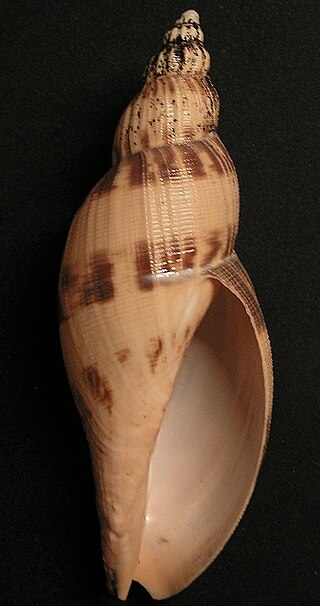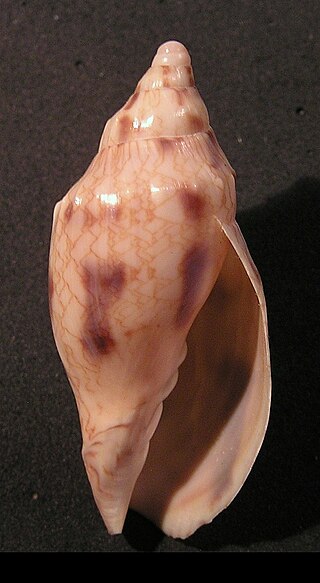
The Nicobar crow is a species of nymphalid butterfly in the Danainae subfamily. It is endemic to the Nicobar Islands of India.

Odontocymbiola simulatrix is a species of sea snail, a marine gastropod mollusk in the family Volutidae, the volutes.

Odontocymbiola is a genus of sea snails, marine gastropod mollusks in the subfamily Cymbiinae of the family Volutidae.

Eurema simulatrix, the changeable grass yellow, is a butterfly in the family Pieridae. It is found from Burma to Sundaland, Cambodia and the Philippines. The habitat consists of secondary or disturbed habitats including forest clearings, roadsides and riverbanks, parks and gardens.
Nyctemera simulatrix is a moth of the family Erebidae first described by Francis Walker in 1864. It is found on Sulawesi, Flores, Bangai and the Key Islands.
Ithome simulatrix is a moth in the family Cosmopterigidae. It was described by Ronald W. Hodges in 1978. It is found in North America, where it has been recorded from Florida.
Idolatteria simulatrix is a species of moth of the family Tortricidae. It is found in Guatemala.
Lycidola is a genus of longhorn beetles of the subfamily Lamiinae, containing the following species:
Lecithocera simulatrix is a moth in the family Lecithoceridae. It was described by László Anthony Gozmány in 1978. It is found in China.
Lycidola batesi is a species of beetle in the family Cerambycidae. It was described by Per Olof Christopher Aurivillius in 1923. It is known from Bolivia and Brazil.
Lycidola beltii is a species of beetle in the family Cerambycidae. It was described by Henry Walter Bates in 1872. It is known from Nicaragua and Honduras.
Lycidola expansa is a species of beetle in the family Cerambycidae. It was described by Henry Walter Bates in 1881. It is known from Costa Rica, Colombia, and Panama.
Lycidola felix is a species of beetle in the family Cerambycidae. It was described by Waterhouse in 1880. It is known from Ecuador.
Lycidola flavofasciata is a species of beetle in the family Cerambycidae. It was described by Waterhouse in 1880. It is known from Bolivia, Ecuador and French Guiana.
Lycidola palliata is a species of beetle in the family Cerambycidae. It was described by Johann Christoph Friedrich Klug in 1825. It is known from Brazil.
Lycidola popeba is a species of beetle in the family Cerambycidae. It was described by Galileo and Martins in 2006.
Lestes simulatrix is a species of stalk-winged damselfly in the family Lestidae.

Aiolopus simulatrix is a species of locust belonging to the family Acrididae, subfamily Oedipodinae.
Alice Gear Aegis is a Japanese mobile game developed by Pyramid and published by Colopl released in 2018.
Prasopora is an extinct genus of bryozoan belonging to the family Monticuliporidae, known from the Middle Ordovician. Its colonies were disc-shaped or hemispherical, flat on bottom and convex on top, and had very abundant mesopores; in the case of the species P. insularis its zooecia were isolated from each other by the numerous mesopores surrounding them. It is very similar to the genus Monticulipora, and some bryozoan species have been assigned to both genera at different points in their study, but it is mostly distinguished by having more mesozooecia, rounder autozooecial apertures, relatively few acanthostyles and diaphragms and cystiphragms equally distributed in the autozooecia.




